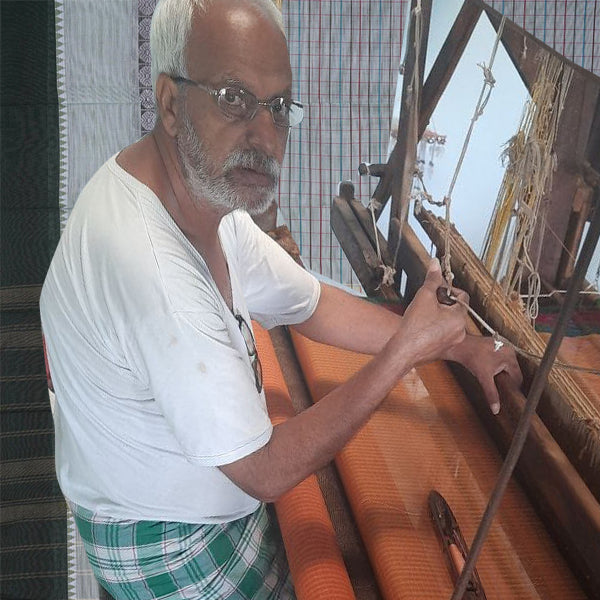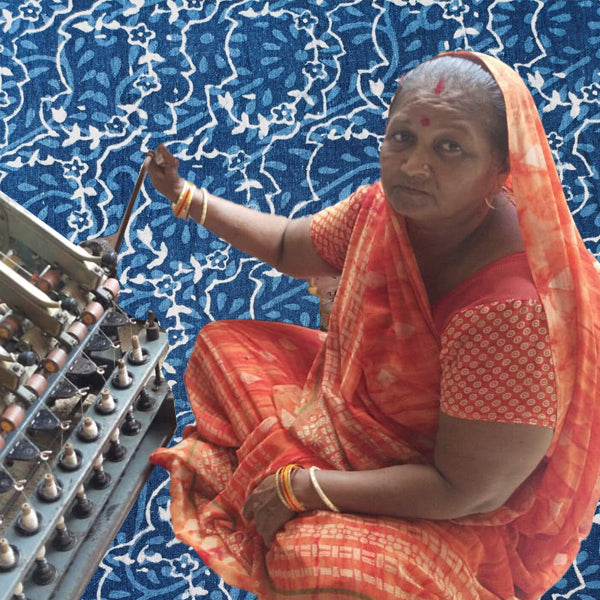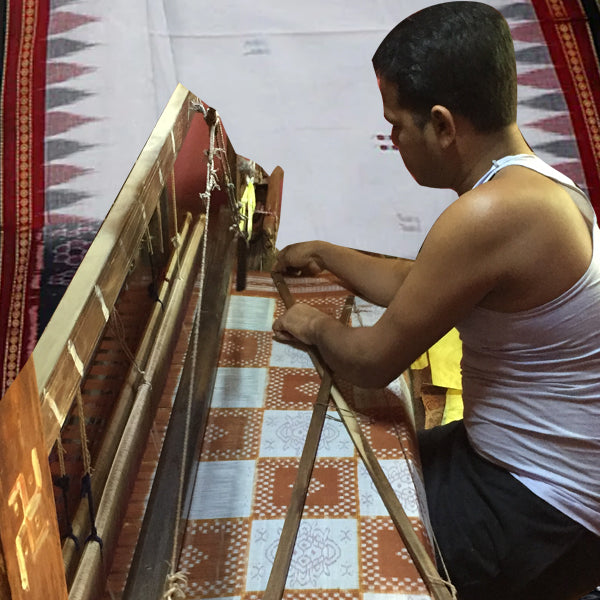INTRODUCTION:
To sing the perfect song, we need the perfect rhythm. To weave an exquisite piece, we need incredible skill, effort, rhythm and loads of patience. Jamdani is one such traditional piece of magic, a highly prized textile technique and is displayed as the jewel and the master stroke of the Bengali weaver.
Touted as the most advanced hand weaving technique in the world, the Jamdani is a symbol of identity, dignity and self-recognition and provides wearers with a sense of cultural identity and social cohesion. The traditional art of Jamdani weaving in Dhaka was inscribed on the Representative List of the Intangible Cultural Heritage of Humanity by UNESCO in 2013 in honour of its esteemed history.
 Jamdani Saree
Jamdani Saree
HISTORY:
Sulaiman, a 9th-century Arab traveller, wrote of cotton fabrics made in the kingdom of Rahmi (erstwhile undivided Bengal) which were so fine they could pass through a signet ring. Around the 12th century, Islamic influences infused the fabric with countless motifs and colours. But it was only during emperor Akbar's reign that the art blossomed into its most exquisite form—the flowered muslin, Jamdani.
The first references to Jamdani itself occur in the 17th century during the time of the Mughal Empire when Emperor Jahangir (r. 1605–1627) wore a sash of Jamdani woven with floral designs. Unfortunately, the rest of the Dhaka muslin industry was lost during the 1900s and Jamdani weaving is all that remains.
But the jamdani weaving heritage has persisted in the present by adjusting to shifting fashions and tastes. Numerous Hindu weavers from Bangladesh moved to India after the partition of Bengal in 1947 and were given rehabilitation in West Bengal. This was the start of jamdani weaving in contemporary-day India.
TECHNIQUES USED:
Jamdani is a discontinuous weft weaving technique and is the practice of delicate Parsi Gara on a loom. (Pari Gara saree is famously known for its intricate, delicate, exquisite embroidery). By manually weaving a denser thread into the delicate warp threads in Jamdani, designs are inlaid into the cloth. This method is regarded as one of the most time-consuming hand-weaving processes in the world. Like a tapestry, jamdani weaving involves weaving the weft via tiny shuttles of coloured, gold, or silver threads.
TYPES OF JAMDANI:
-
Dhakai Jamdani (Bangladesh): These jamdani sarees feature the most intricate craftsmanship and are the original and best available. It could take nine months to a year to make one of these sarees.
-
Tangail Jamdani (Bangladesh): These jamdani sarees were woven in the Tangail district and have the customary large borders with lotus, lamp, and fish scale designs.
-
Shantipur Jamdani (India) : These jamdani sarees are comparable to Tangail jamdanis and were produced in Shantipur, West Bengal. They have a beautiful texture, and the saree is frequently adorned with classy striped designs.
-
Dhaniakhali Jamdani (India) : These jamdani sarees, which have their origins in Dhaniakhali, West Bengal, feature a tighter weave than the Tangail and Shantipur variants. Bold colours and dark, contrasting borders serve as identifiers for them.
MOTIFS USED:
The Jamdani motifs were traditionally inspired by nature, flora or fauna. As the weavers count threads instead of using machinery the motifs were more geometric in nature than those of other traditional weaves.
 Paisley
Paisley  Butidar
Butidar
Designs include "jhalar," (a network of floral motifs). "tercha," (diagonally striped florals), mayur (bird) and "butidar," (wherein the entire sari is dispersed with florals) which include flowery patterns scattered across the whole saree.
 Mayur motif
Mayur motif
Other popular traditional motifs include panna hajar (thousand emeralds), kalka (paisley), butidar (small flowers), fulwar (flowers arranged in straight rows), tersa (diagonal patterns), jalar (motifs evenly covering the entire saree), duria (polka spots) and charkona (rectangular motifs)
 Jalar motif
Jalar motif
CURRENT ADAPTATION:
Jamdani's specialty lies in its ability to integrate new techniques into an enduring craft. Since its beginnings in monotones of white-on-white, its palette has expanded into vibrant, colourful forms. Since Jamdani began as cotton muslin, silk, silver, gold, and more have been incorporated into its weaves to create fascinating variations. With the advent of modern technology, Jamdani can be done on a variety of materials with or without the use of any machines. The motifs used in the Jamdani have also gone through many changes from florals to geometric motifs.
 Contemporary motif
Contemporary motif  Contemporary motif
Contemporary motif  Contemporary motif
Contemporary motif
 Jamdani in tussar silk
Jamdani in tussar silk
HOW TO IDENTIFY JAMDANI:
- Face and back looks the same in Jamdani
- Always examine the fabric's reverse side to determine whether it is a jamdani.
 Face side
Face side  Back side
Back side






Leave a comment